How to choose the perfect ski jacket
Choosing the right ski jacket is a big deal. With so many options out there, how do you possibly make an informed decision? Well, it starts with a splash of knowledge and a handy guide on how to choose a ski jacket. Oh, and would you look at that? Seems like you’re already in the right place.
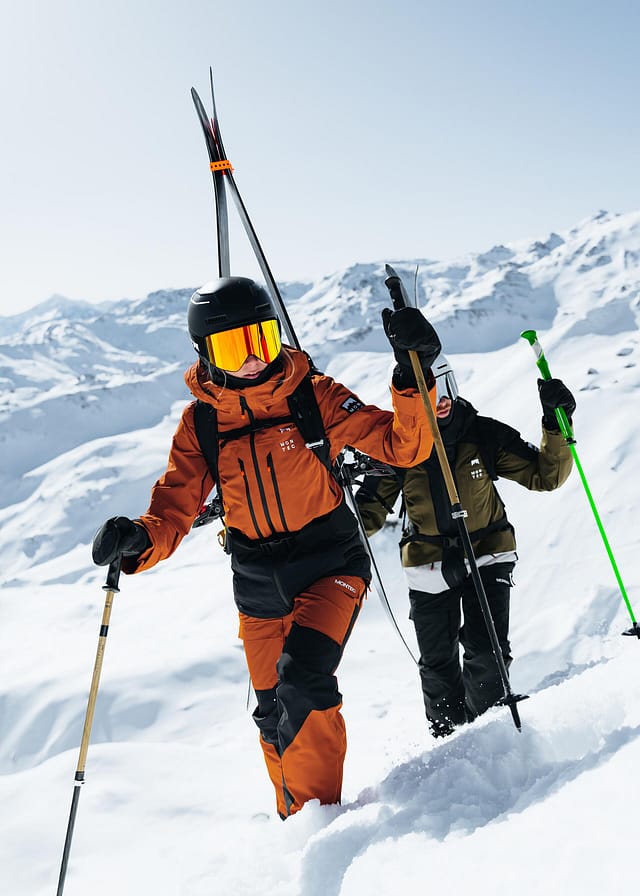
Do you know your DWRs from your ABCs? If not, we’ve got a crash course right here. We’ll walk you through everything that goes into the best ski jackets – the key features to look out for, what really matters, what isn’t so important, and where you can let personal preference lead.
So, jump into our guide and find the best choice for you. By the end of this rundown, you’ll make a confident, informed decision on your next setup, and rip with style from day one.
Key things to consider for your ski jacket
Ski jacket types
Insulation and warmth
Waterproofness, breathability, and performance
Fit and style
Important features
Best ski jackets for men
Best ski jackets for women
Ski jacket types
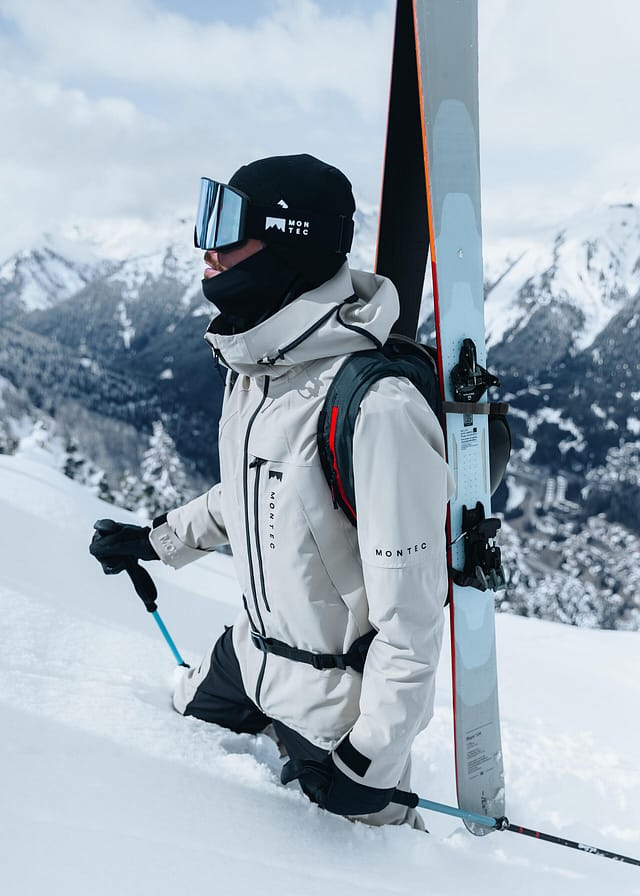
There are three main types of ski jackets to consider: shell, insulated, and softshell. Shell jackets are lightweight and super versatile with no built-in insulation. So, depending on the weather, shells are ideal for layering. Shell jackets are a favourite among experienced riders and anyone who values flexibility over straight-up warmth.
Insulated jackets add a layer of heat right into the construction. They’re amazing for resort skiing or colder climates where you don’t want to think too much about layering. Lastly, you’ll find softshell jackets. Softshells focus on comfort and mobility. They’re stretchy, cosy, and simple, making softshells great for spring sessions or easygoing days on the hill.
Insulation and warmth
For warmth, insulation type and weight make all the difference. Most ski jackets use synthetic polyester insulation because it performs well even when wet, dries quickly, and locks in heat. A medium-weight insulation of 60gsm in the body and 40gsm in the sleeves offers the ideal balance between warmth and breathability. This combination is light enough to prevent overheating on active days but warm enough to handle freezing mornings on the mountain.
Layering is another key part of staying comfortable. If using a shell jacket, pairing it with a base layer and a midlayer (such as a fleece) lets you adapt to any weather. On milder days, you can drop the midlayer entirely for better ventilation. This flexibility is why layering systems are so popular. They let you adjust warmth without sacrificing performance or mobility.
Waterproofness, breathability, and performance
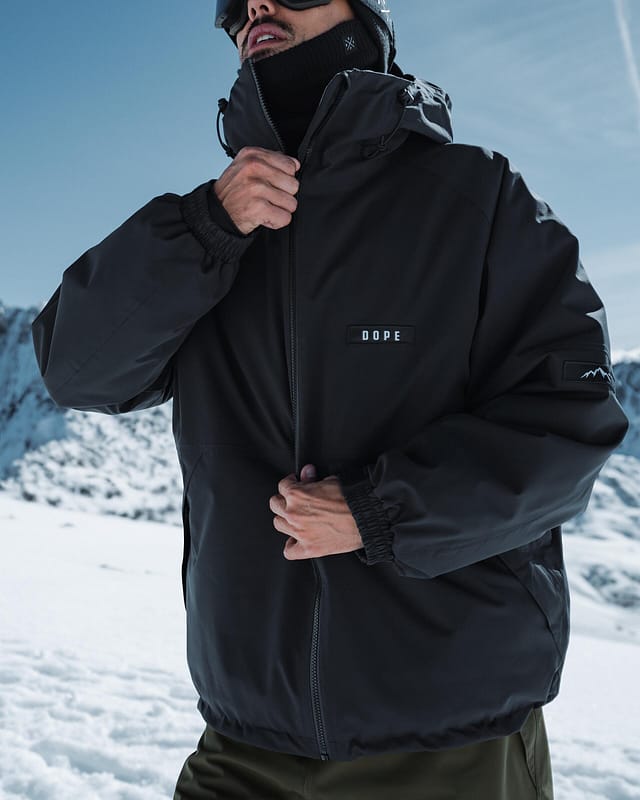
Above all else, a good ski jacket has to be waterproof. Most quality jackets have at least 15,000 mm waterproofing and 15,000 g breathability, which keeps you dry all day in typical resort conditions. Tackling heavier snow or wetter climates? A 20k/20k rating is ideal, offering superior performance even in terrible weather.
It’s not just the waterproof membrane that matters, though. A DWR (durable water repellent) coating helps water bead up and roll off the surface instead of soaking in. For breathability, a 15,000 g rating is a solid choice. This is the amount of water vapour (sweat) that can get out of the jacket. Higher ratings mean more breathability and less sweat buildup, and so better performance.
Fit and style
Fit is about more than just looks. A good fit is crucial for comfort and movement on the mountain. Most modern ski jackets are relaxed or oversized to allow room to move freely and layer underneath. This makes these jackets versatile for all kinds of riding, whether carving the groomers, hitting the park, or trekking into the backcountry.
An oversized cut also adds a few extra style points. It gives you that laid-back, modern look while still being totally functional. So, whether you go for a baggy freestyle aesthetic or something a bit more streamlined, make sure your jacket allows full freedom of movement.
Important features
Features can make or break a ski jacket. And it’s important to get the right ones for your riding style.
Adjustable hood
An adjustable, helmet-compatible hood is a must for any good jacket. Some jackets have a single adjustment like a drawstring, while others have multiple-point adjustment, allowing you to tweak the size or depth of the hood for the perfect helmet fit. Some hoods are also shaped or have visors to keep their structure and protect you from bad weather.
Zippers
Zippers and seams are the weakest part of any jacket when it comes to waterproofing and heat retention. As such, it’s important to go with a jacket that has high quality zips, and for any exposed zips, they should also be waterproof too, to keep you (and your stuff!) from getting wet.
Snow skirt and gaiters
When it comes to deeper days and fresh powder, snow skirts and gaiters are a must. Snow skirts stop loose snow from going up your jacket and making you cold and wet, while gaiters prevent it from getting into your sleeves, protecting your layers from soaking up any moisture.
Underarm vents
Underarm vents are your best friend when things heat up. These zipped openings let you dump excess warmth fast without removing your jacket, keeping your temperature balanced on hikes, in the park, or on spring days. Plus, they add a technical touch to your look, letting you stay cool and stylish when the session gets going.
Pockets
Pockets are the other big factor to consider! All jackets have them, but how big are they? How many are there? Is there a dedicated pocket for your lift pass? What about your phone? Do you have a dump pocket for your gloves or beanie? Are you able to easily access your things without unzipping? Depending on your needs, there are plenty of questions to answer when it comes to pockets!
Drawstring hem
An adjustable drawstring hem lets you fine-tune both your fit and your style. Tighten it to lock in warmth and keep snow out on deep days, or loosen it for a relaxed, laid-back look. It’s a small feature that makes a big difference – keeping you comfortable while letting you ride your way.
Best ski jackets for men
Whether exploring the backcountry, lapping the park, or cruising corduroy, these jackets from Montec and Dope handle it all.
Montec Oracle
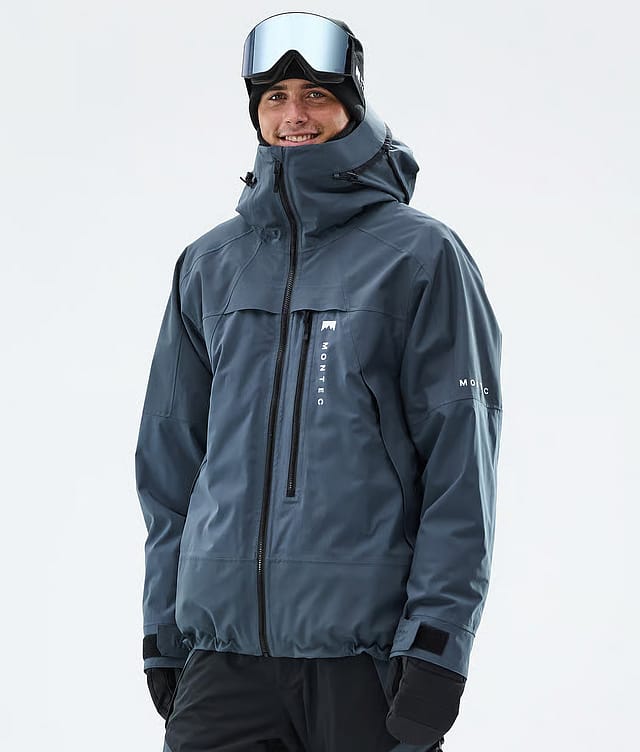
Montec Morpheus

Dope Vertex
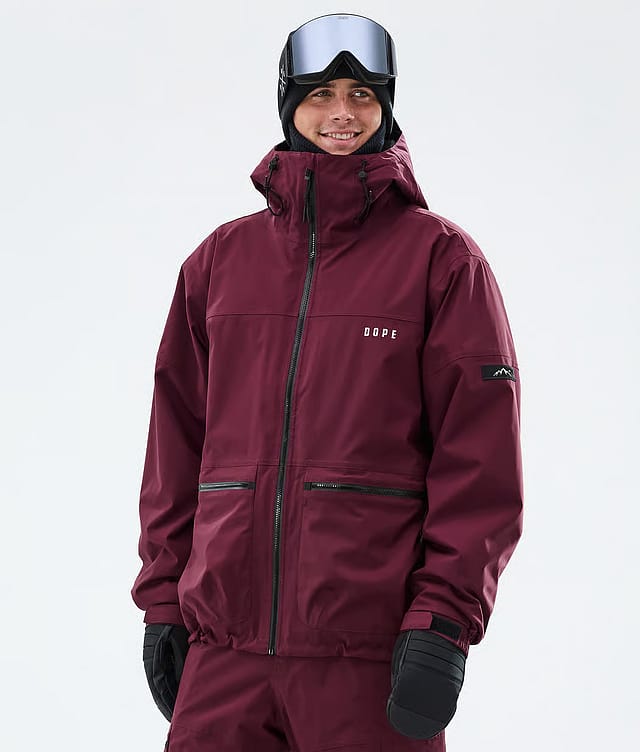
Montec Dune
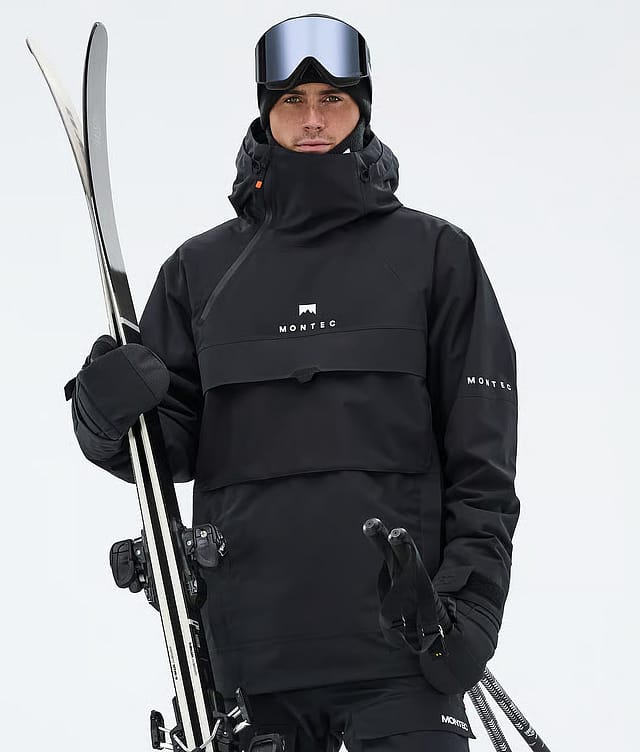
Montec Arch
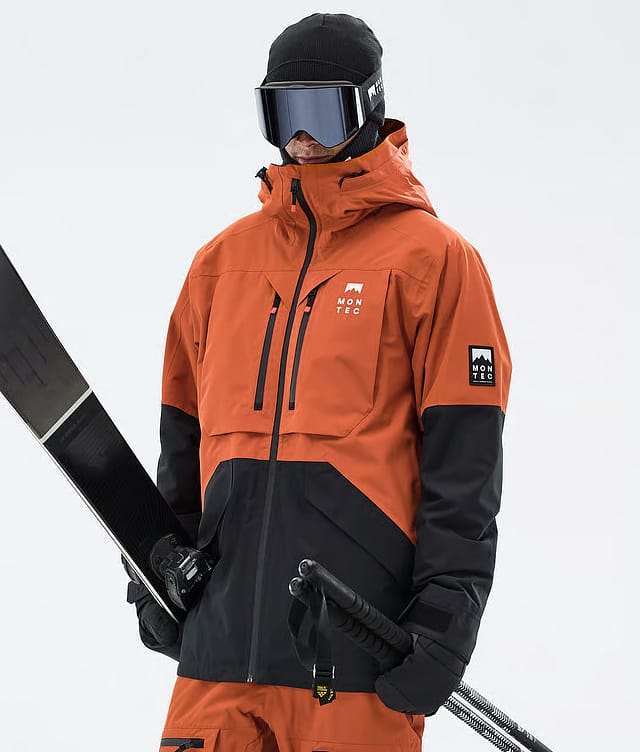
Best ski jackets for women
From powder days to park laps, these women’s ski jackets from Montec and Dope balance style, comfort, and serious technical performance.
Montec Oracle W

Montec Moss
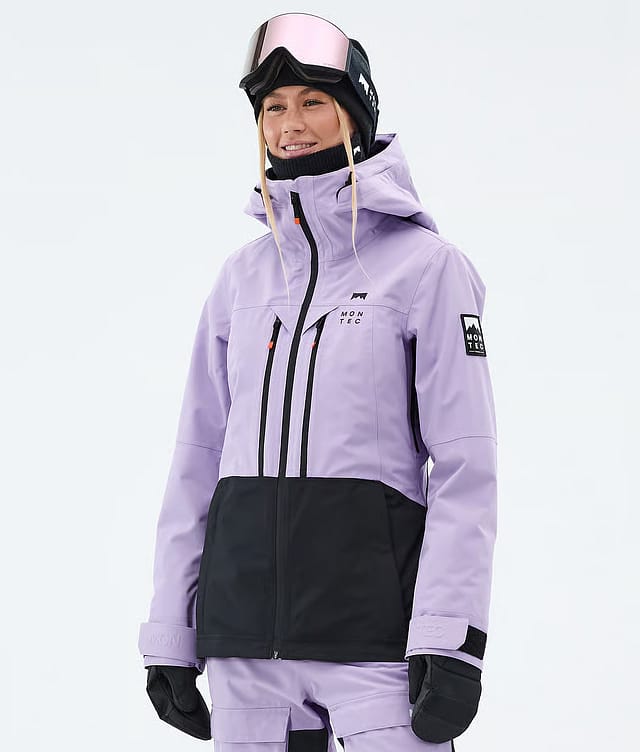
Dope Spartan W

Montec Virago
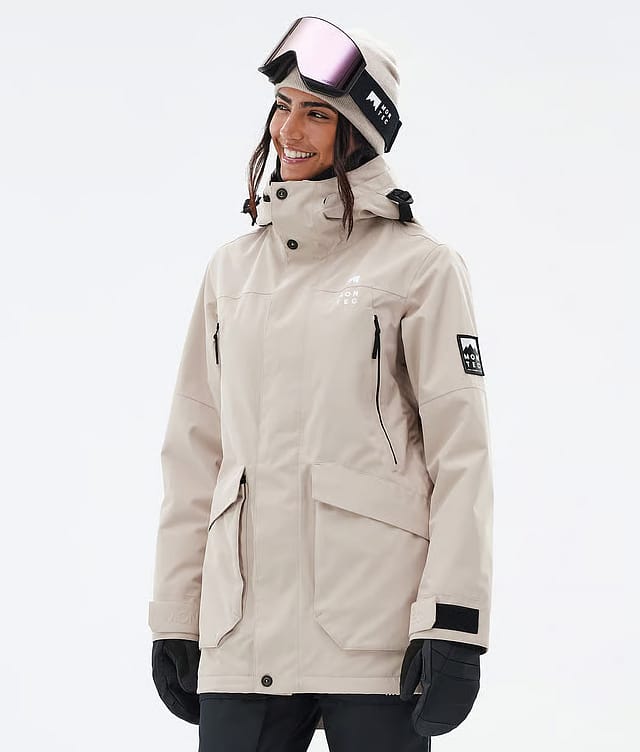
Montec Morpheus W
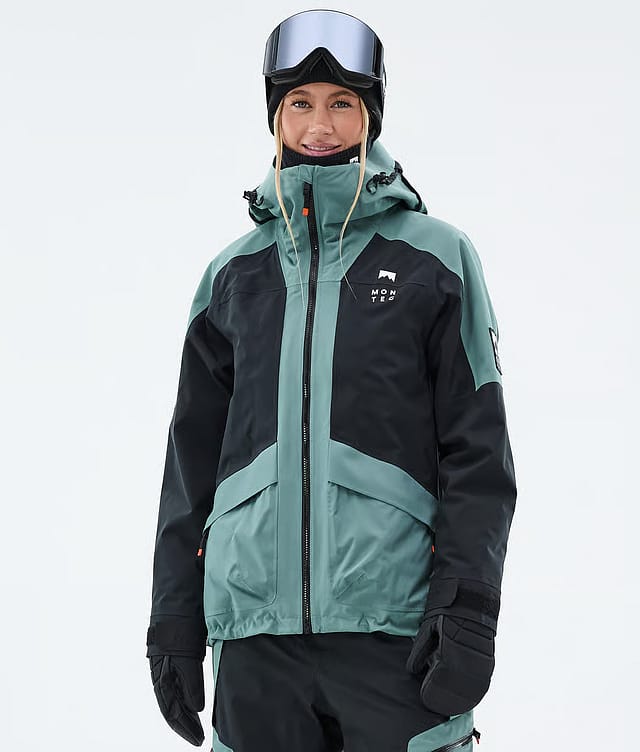
Wrapping up
That’s it! Hopefully, you’re now equipped with all the knowledge you need to choose the right jacket for the coming season. Whether you’re soaking up spring sessions and après or deep days in the backcountry, you’ll be protected and turn heads with any jacket from our selection.
Need more information on our jackets? Or want to chat about snow in general? Reach out to us at crew@ridestore.com!
Related reading:







